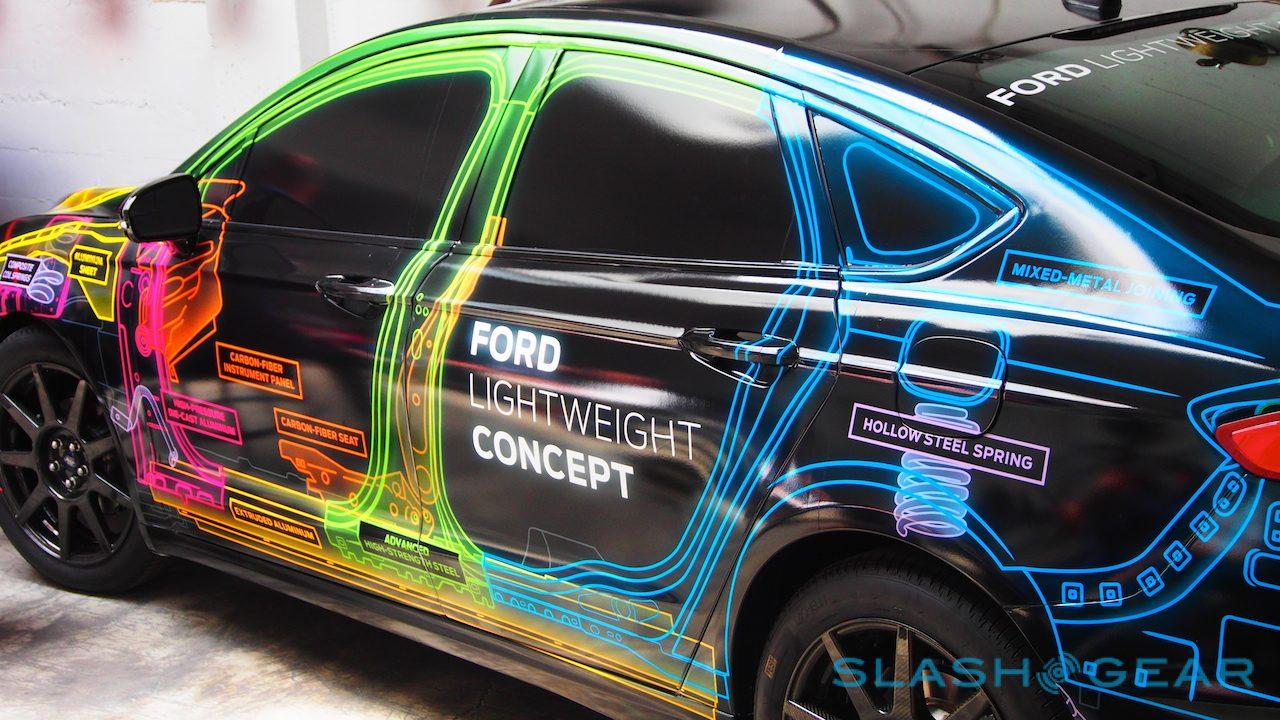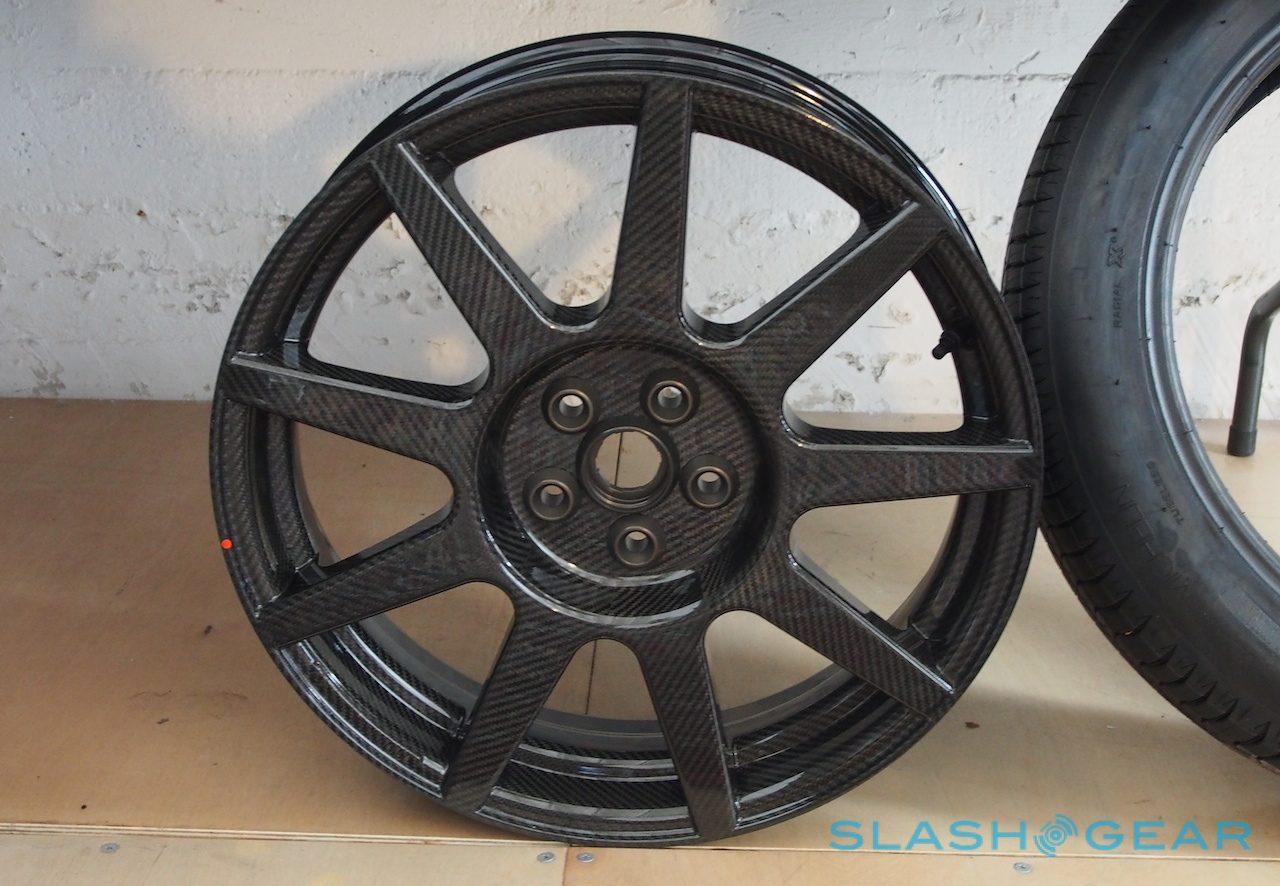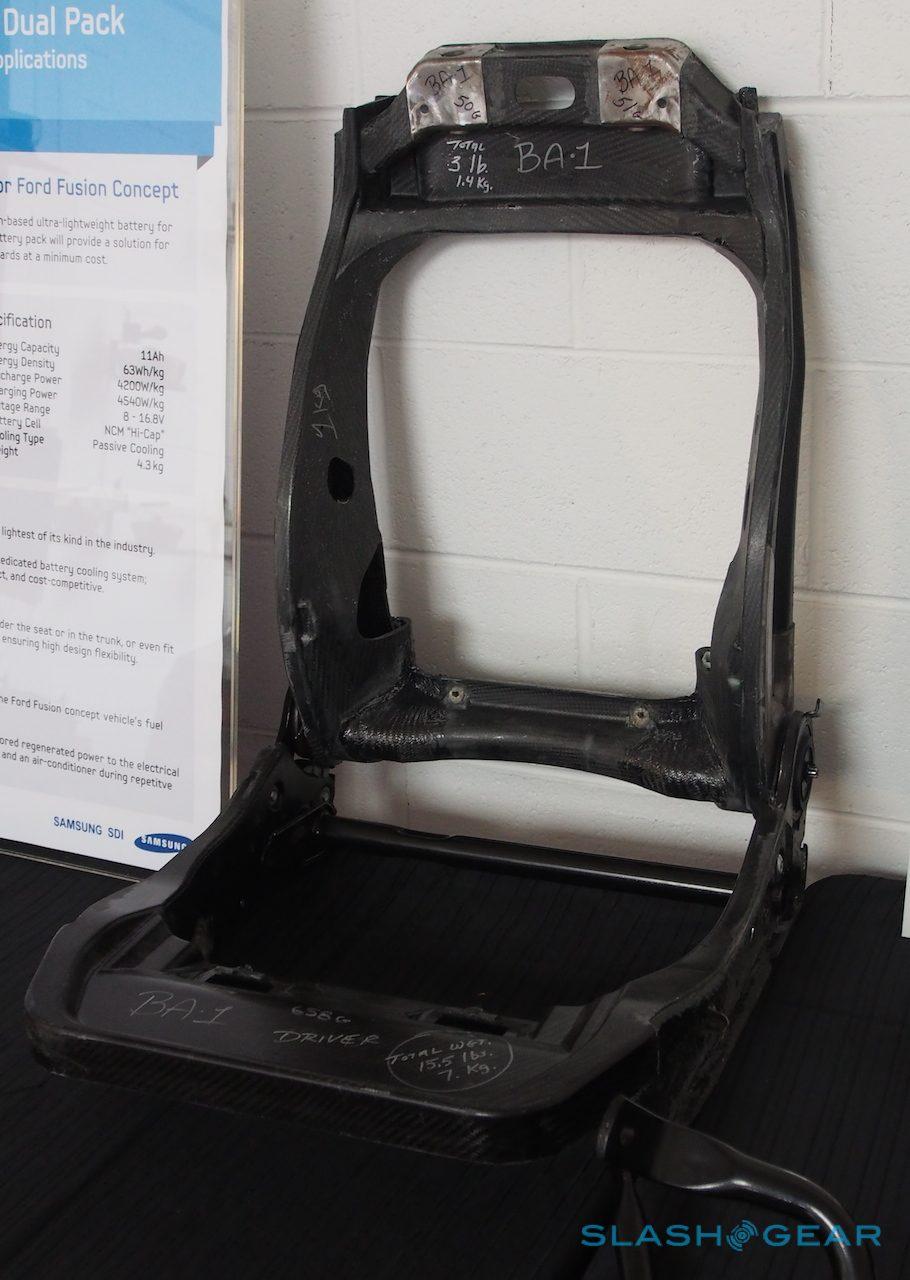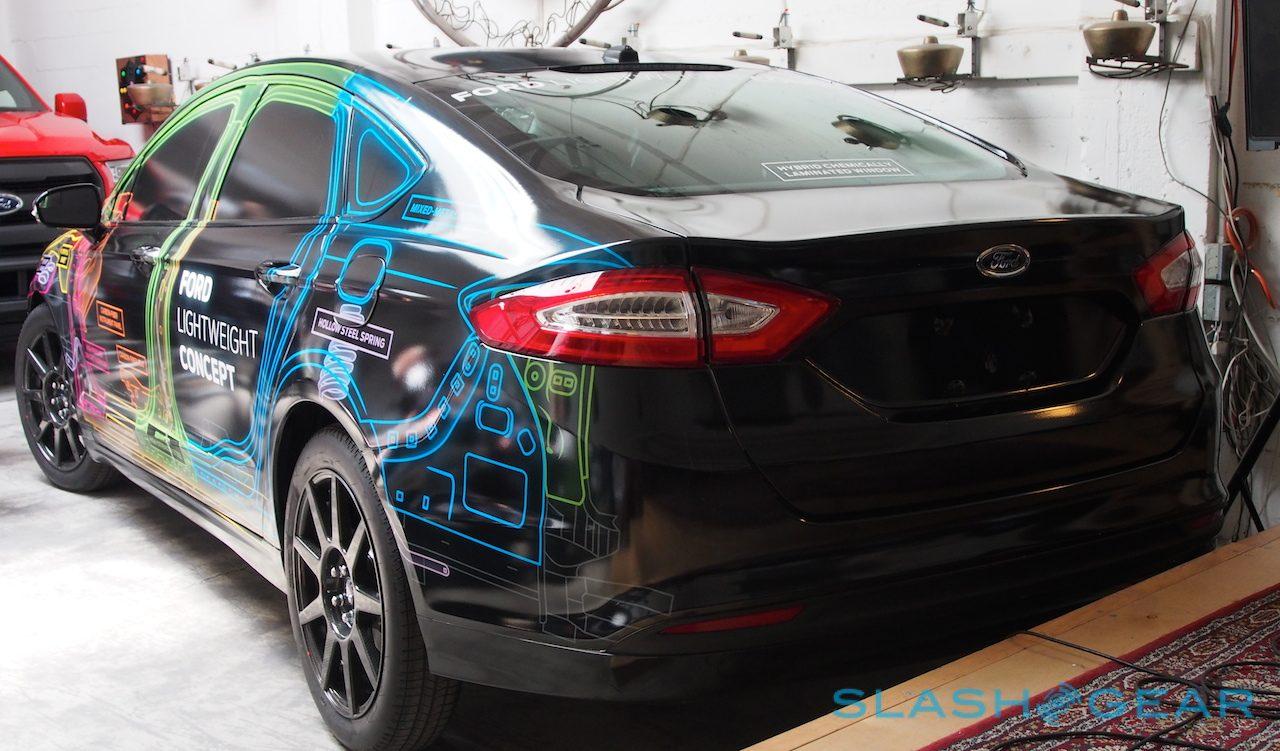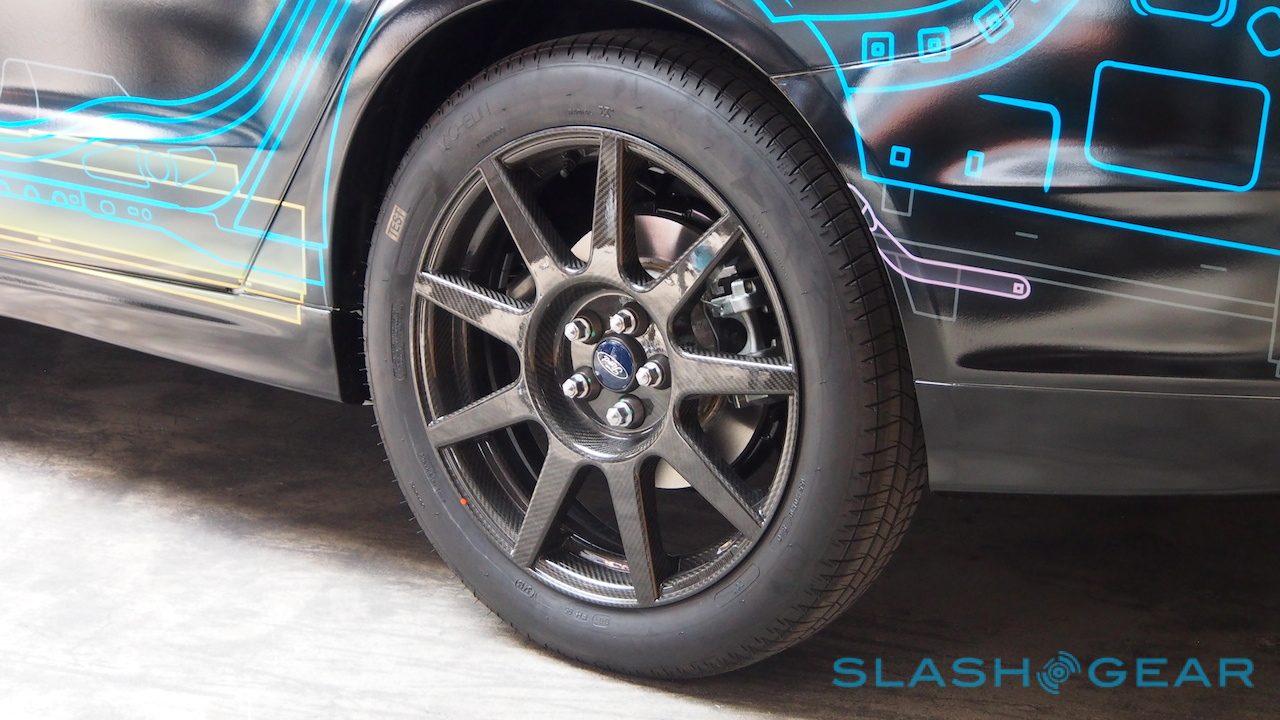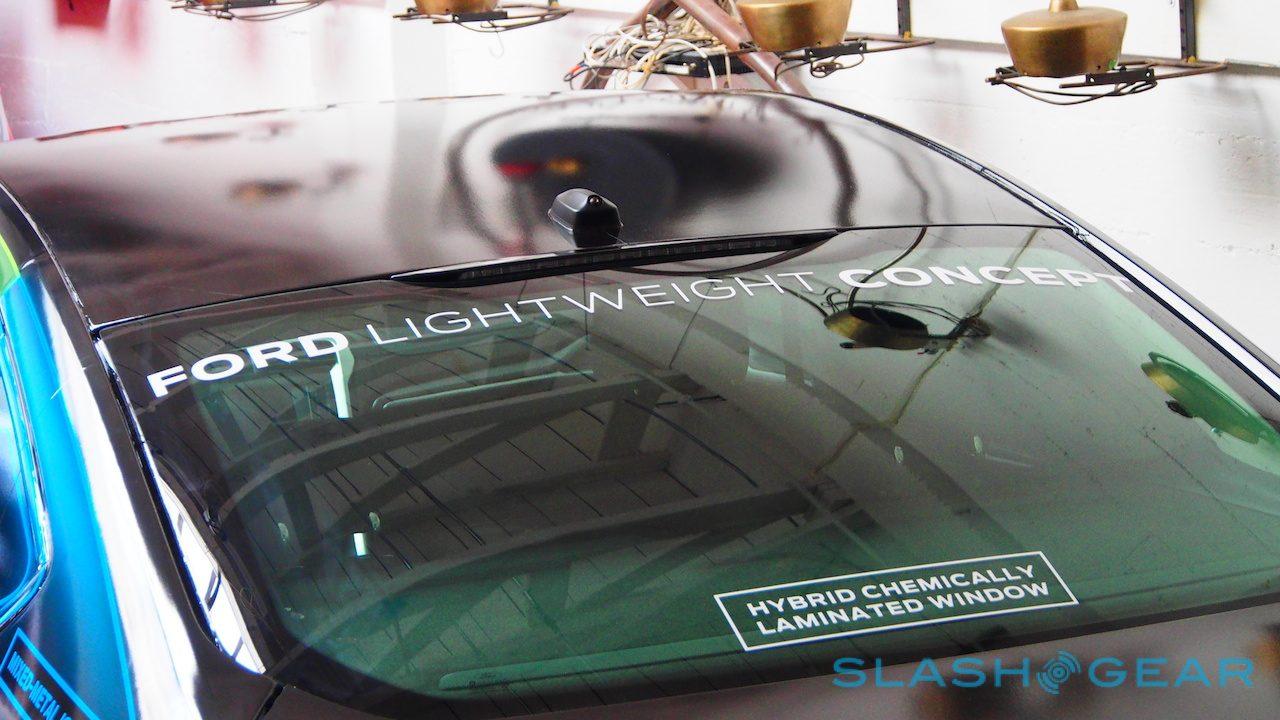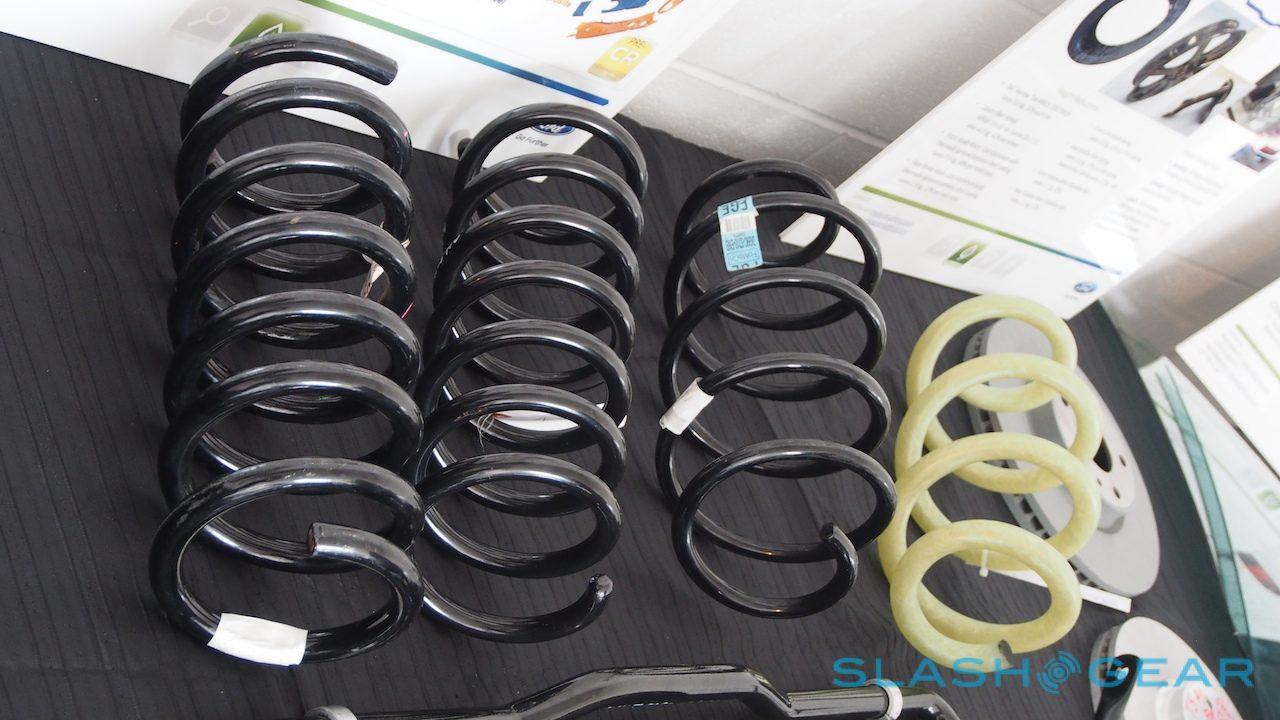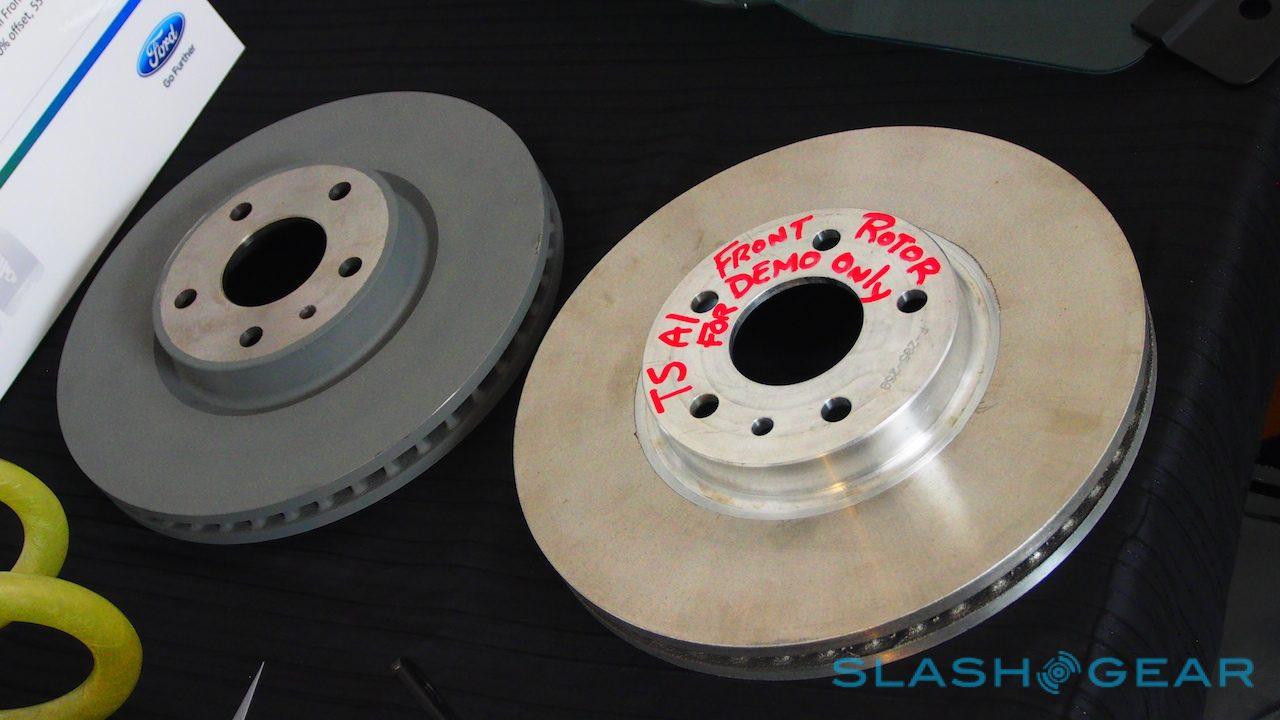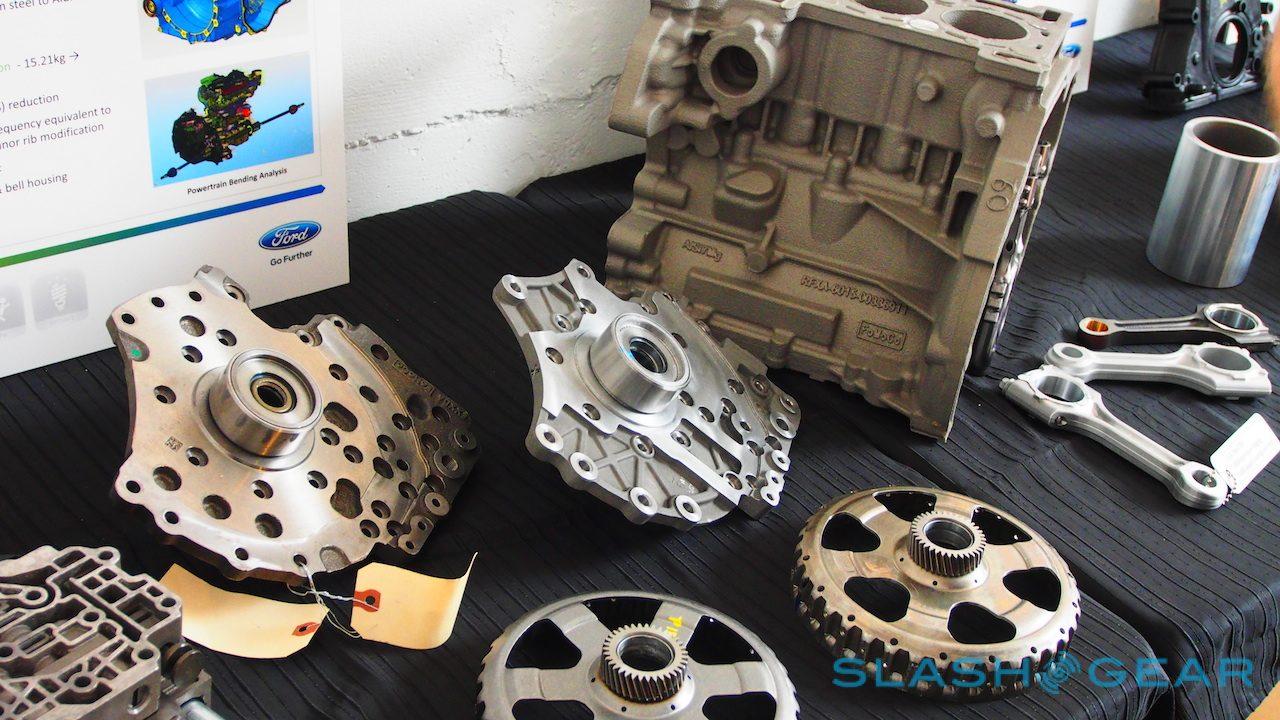Ford Lightweight Concept Car eyes-on: High-tech, Low-weight
Ford wasn't going to let all that aluminum research on the 2015 F-150 be used on just one truck, and so now there's the Ford Lightweight Concept, a prototype car that, along with Samsung battery collaboration, aims to change the way we look at tomorrow's vehicles. Effectively delivering a car akin in size to a 2013 Fusion but with the weight of a Fiesta – a car two classes beneath it – the Lightweight Concept trims weight from the suspension, interior, glazing, and powertrain by using materials like aluminum alloy, carbon fiber, and composites.
Just as the F-150 switches its body and bed from steel to aluminum alloy, saving around 700 pounds versus the outgoing truck, so the Ford Lightweight Concept Car makes considerable cuts in the panels. By using aluminum sheet, extrusions, and castings along with high-strength and ultra-high-strength steel, and some magnesium in the front doors, Ford has cut the Fusion's weight by around 25-percent.
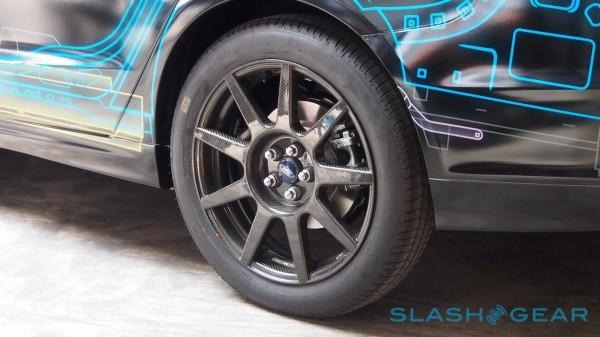
The cuts have in many cases been even more significant under the body. The suspension has been trimmed by 30-percent, using taller, narrower tires and 19x5 inch carbon fiber wheels, through aluminum brake rotors coated with steel, and by making the steel stabilizer bars hollow. There's also composite and hollow steel coil springs.
Ford F-150 X1 prototype testing:
The glazing has been trimmed by 35-percent, with a polycarbonate rear window and a new hybrid laminate glass for the windshield and side windows. That mixes chemically-toughened glass with soda lime glass, similar to what Gorilla Glass offers for smartphone displays.
Finally, there have been changes inside, too, with Ford using carbon fiber fro the seats and interior components, and switching to foamed interior plastic trim. Like the glazing, the new interior parts cut around 35-percent over the traditional 2013 Fusion.
Gold Standard: Inside Ford's secret 2015 F-150 testing
All of that means Ford can use a smaller engine without necessarily losing out in performance. Ford has used a 1.0-liter aluminum EcoBoost 3-cylinder engine, it itself 24-percent lighter with the use of hollow steel crankshafts and forged aluminum connecting rods, a carbon fiber oil pan, front cover and cam carrier, and cast aluminum and magnesium transmission parts.
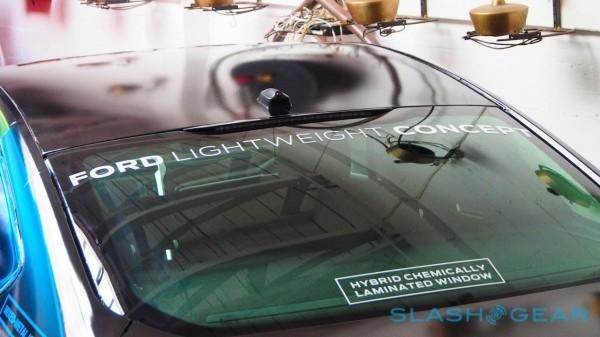
Six of the concepts will be built, with two headed off for crash testing.
Ford isn't saying it'll switch entirely to the technologies shown on the Lightweight Concept Car for its production range – there are clearly some significant costs involved in these more unusual materials – but instead is treating the prototype as a learning project carried out with the US Department of Energy. Those that are more practical will graduate to the company's consumer models.

